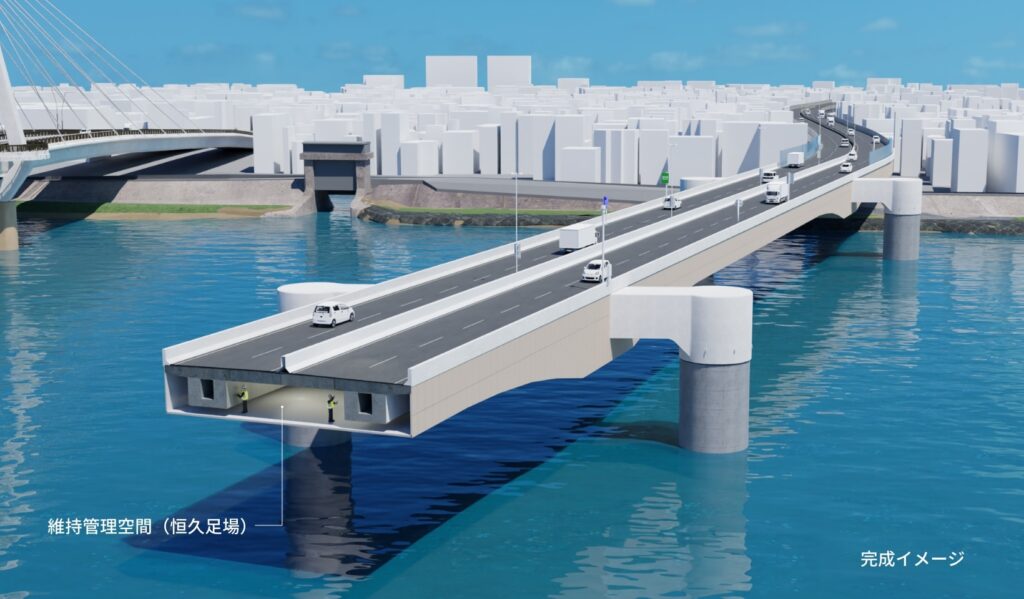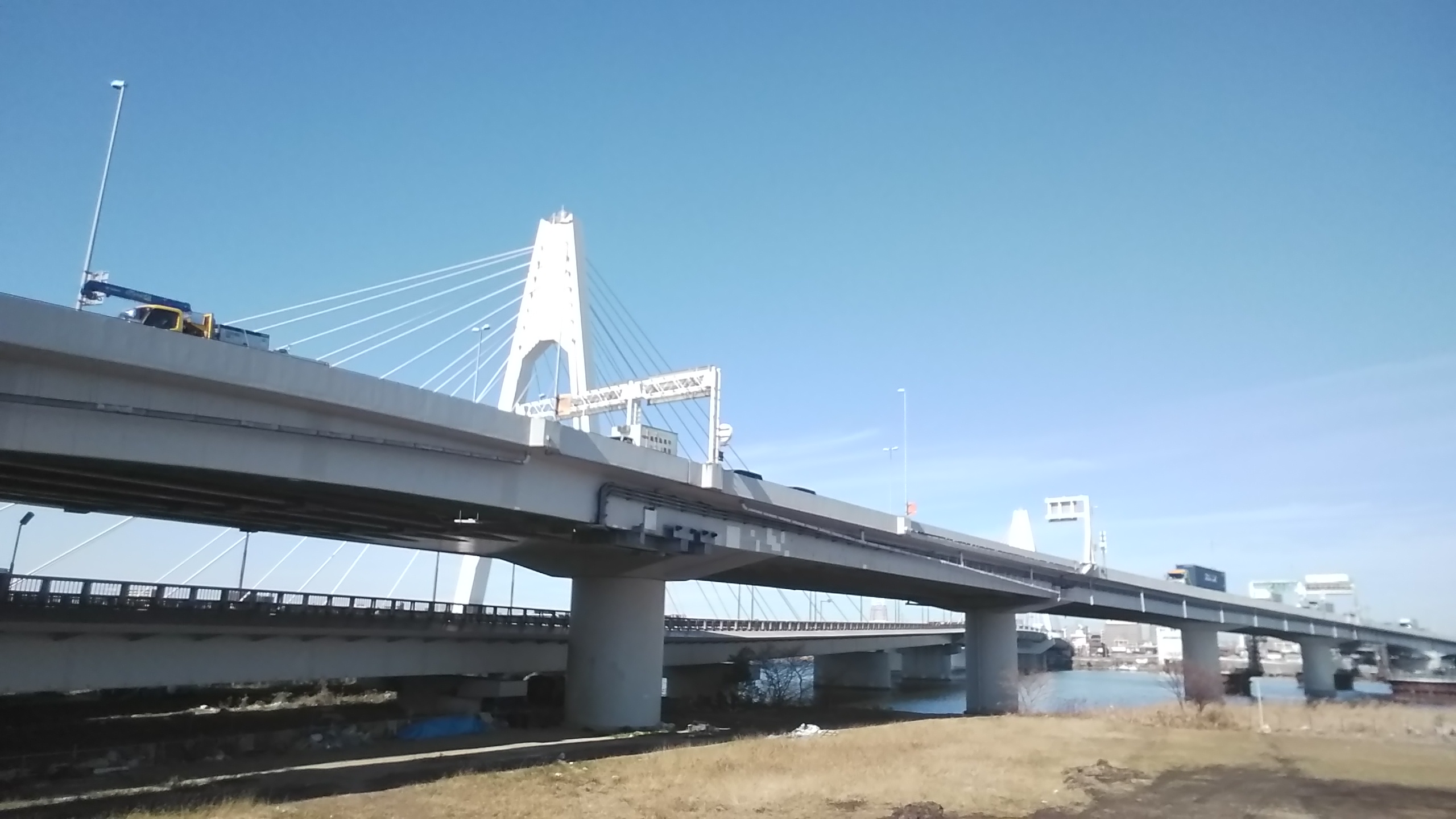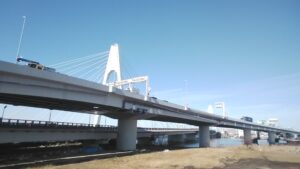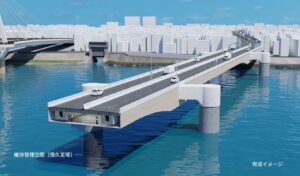The Aging Infrastructure Problem of the Shuto Expressway
The Shuto Expressway network connects Tokyo and Kanagawa like a spider’s web. As a vital transportation infrastructure supporting Japan’s economic activities and people’s daily lives, hundreds of thousands of vehicles pass through it every day. Among these routes, the Kosoku Daishi Bridge, located at a key position connecting Tokyo and Kanagawa, has played an extremely important role as a major artery for logistics.
However, more than half a century has passed since the bridge’s construction, and deterioration has become a serious problem. Like many infrastructures built during Japan’s high economic growth period, the Kosoku Daishi Bridge has reached its design service life and faced a situation requiring drastic measures.
The aging of the Shuto Expressway is not merely a problem of a single bridge. Many road bridges built across Japan during the high economic growth period are simultaneously reaching their renewal time, and there is a need to respond efficiently with limited budgets and personnel. Especially in areas with heavy traffic like the Tokyo metropolitan area, the impact of long-term road closures on economic activities is immeasurable.
An Unprecedented Challenge | Replacing a 4,500-Ton Bridge in Two Weeks
Under these circumstances, the Kosoku Daishi Bridge replacement project was formulated. The greatest feature of this project was an unprecedented plan, unparalleled anywhere in the world, to replace a massive 4,500-ton bridge in an ultra-short period of just two weeks to minimize the social impact of road closures.
Normally, bridge construction work of this scale typically requires several months to over a year. Completing it in two weeks was absolutely impossible with conventional construction methods. To realize this project, meticulous advance preparation, innovative technology, and perfect timing in work execution were required.
The project team adopted a method of prefabricating new bridge girders and preparing them near the site by the day of replacement. This established a system that could concentrate on removing the old bridge and installing the new bridge during the actual road closure period.
Technical Capability that Attracted Attention from Global Experts
This replacement project attracted significant attention from bridge engineering experts worldwide. Short-term replacement of large-scale bridges is extremely technically difficult, and many experts questioned its feasibility.
The key to the project’s success was Japan’s unique precision construction management technology and accurate positioning technology down to the millimeter level. To accurately install a massive 4,500-ton structure on existing bridge piers, advanced surveying technology and computer-controlled precision work were essential.
Additionally, by concentrating construction at night, measures were taken to minimize impact on daytime traffic. The sight of hundreds of workers advancing work in perfectly coordinated teamwork within limited time was truly a crystallization of Japanese technical capability and organizational strength.
Battle Against One Accident After Another
However, this project did not proceed smoothly without challenges. Due to the nature of ultra-short-term work, even minor troubles could significantly impact the overall schedule.
In fact, various accidents occurred during the construction period. Engineers faced one unexpected situation after another, including work interruptions due to sudden weather changes, discovery of unexpected ground conditions, and temporary malfunctions of precision equipment.
Particularly serious were the unexpected difficulties in removing the old bridge girders. Deterioration and deformation of structural members due to years of use had progressed beyond initial surveys, resulting in removal taking more time than planned. Within the limited time, engineers quickly considered countermeasures and made decisions such as changing work procedures and deploying additional heavy machinery.

The Passionate Spirit of Engineers
Supporting this project was not just cutting-edge technology. Rather, it was the passion and sense of responsibility of the engineers operating it that became the driving force to overcome numerous difficulties.
Many engineers participating in the project had been conducting meticulous preparations for months beforehand. Before the actual replacement work, they conducted simulations many times, anticipating possible problems and devising countermeasures. Nevertheless, unexpected situations occurred at the site, and each time, engineers used their wisdom and experience to find solutions.
Even as fatigue accumulated during continuous all-night work, the attitude of never compromising and pursuing quality embodied the spirit of Japanese manufacturing. The sense of mission to “protect the infrastructure supporting metropolitan transportation” drove them forward.
Precise Planning and Execution Management
To complete large-scale replacement work within the limited period of two weeks, precise work planning down to the second was necessary. The project team broke down the entire construction into thousands of small tasks, assigning responsible persons and implementation times to each.
Like an orchestral performance, each team needed to fulfill their role at perfect timing. Various specialists—heavy machinery operators, surveying engineers, welders, electricians, safety managers—gathered for one project and advanced work while closely coordinating.
Particularly important was the installation work of new bridge girders. The work of accurately placing a massive 4,500-ton structure on existing bridge piers required precision that did not allow even a few millimeters of deviation. The work of carefully lifting with large cranes and guiding to the exact position using GPS and the latest surveying technology was truly a fusion of craftsmanship and cutting-edge technology.
Consideration for Local Communities and Public Relations Activities
In conducting such large-scale construction, consideration to minimize impact on surrounding areas was essential. Activities were conducted to provide sufficient explanation and seek understanding regarding impacts on residents’ lives, such as noise, vibration, and traffic effects.
The project team held multiple briefing sessions for local residents several months before construction, carefully explaining the necessity of the work and safety measures. Additionally, they provided detailed information such as detour route guidance during the construction period and advance notice of times when noise would occur.
This attitude of emphasizing dialogue with local communities played an important role in smoothly advancing the project. It was because of residents’ understanding and cooperation that intensive construction including nighttime work became possible.
A New Model for Aging Infrastructure Renewal
The Kosoku Daishi Bridge replacement project holds significance beyond merely renewing one bridge. This project became a model case for a new approach to aging infrastructure renewal progressing throughout Japan.
Rather than conventional long-term construction, the method of conducting thorough advance preparation and then completing replacement concentrated in a short period has been considered for application in other regions as an effective way to renew infrastructure while minimizing traffic impact.
Moreover, the technology and know-how accumulated through this project have become valuable assets for future bridge construction work. Various insights—construction management methods utilizing digital technology, precision positioning technology for large structures, work management methods realizing large-scale construction in short periods—will be passed on to the next generation.
Lessons from the Project
There are many lessons to learn from this Kosoku Daishi Bridge replacement project. First is the importance of meticulous advance preparation. The work could be completed in the short period of two weeks precisely because of careful preparation over several months.
Next is the power of teamwork. Engineers from different specialized fields cooperated toward a common goal and maximized their respective expertise, successfully leading the difficult project.
And there is the challenge of technological innovation. The attitude of continuously challenging with new technology and ideas what was thought impossible with conventional methods supports Japan’s technical capability.
Toward Future Infrastructure Development
The successful replacement of the Kosoku Daishi Bridge brought hope for the future of Japan’s infrastructure development. As many infrastructures built during the high economic growth period reach their renewal time in the future, the technology and experience cultivated in this project will play an important role in realizing efficient infrastructure renewal with minimal impact.
At the same time, this project provided great stimulus to young engineers. The experience of challenging difficult tasks and overcoming them has become a valuable asset in nurturing next-generation engineers.
Infrastructure such as the Shuto Expressway is an important foundation supporting our daily lives and economic activities. Its maintenance and renewal are supported by the constant efforts of engineers. The Kosoku Daishi Bridge replacement project is a crystallization of such invisible efforts and technical capability, becoming a symbolic example demonstrating Japan’s underlying strength as a technology-oriented nation.
Conclusion
The Shuto Expressway Kosoku Daishi Bridge replacement project was an innovative initiative that responded with a revolutionary approach to the challenge of renewing aging infrastructure faced by all of Japan.
The unprecedented challenge of replacing a massive 4,500-ton bridge in just two weeks amazed experts worldwide. The project’s success was realized through cutting-edge technical capability, meticulous planning, and above all, the passion and sense of responsibility of engineers.
The way they united as a team to confront and overcome numerous accidents that occurred during the construction period symbolized the spirit of Japanese manufacturing.
This project provides a new model for future infrastructure development in Japan and also holds important significance in terms of engineer training and technology succession. It is an example that makes us newly aware that behind the infrastructure supporting our lives lie such passionate thoughts and efforts of engineers.










コメント